Biggest Threats To Coral Reefs
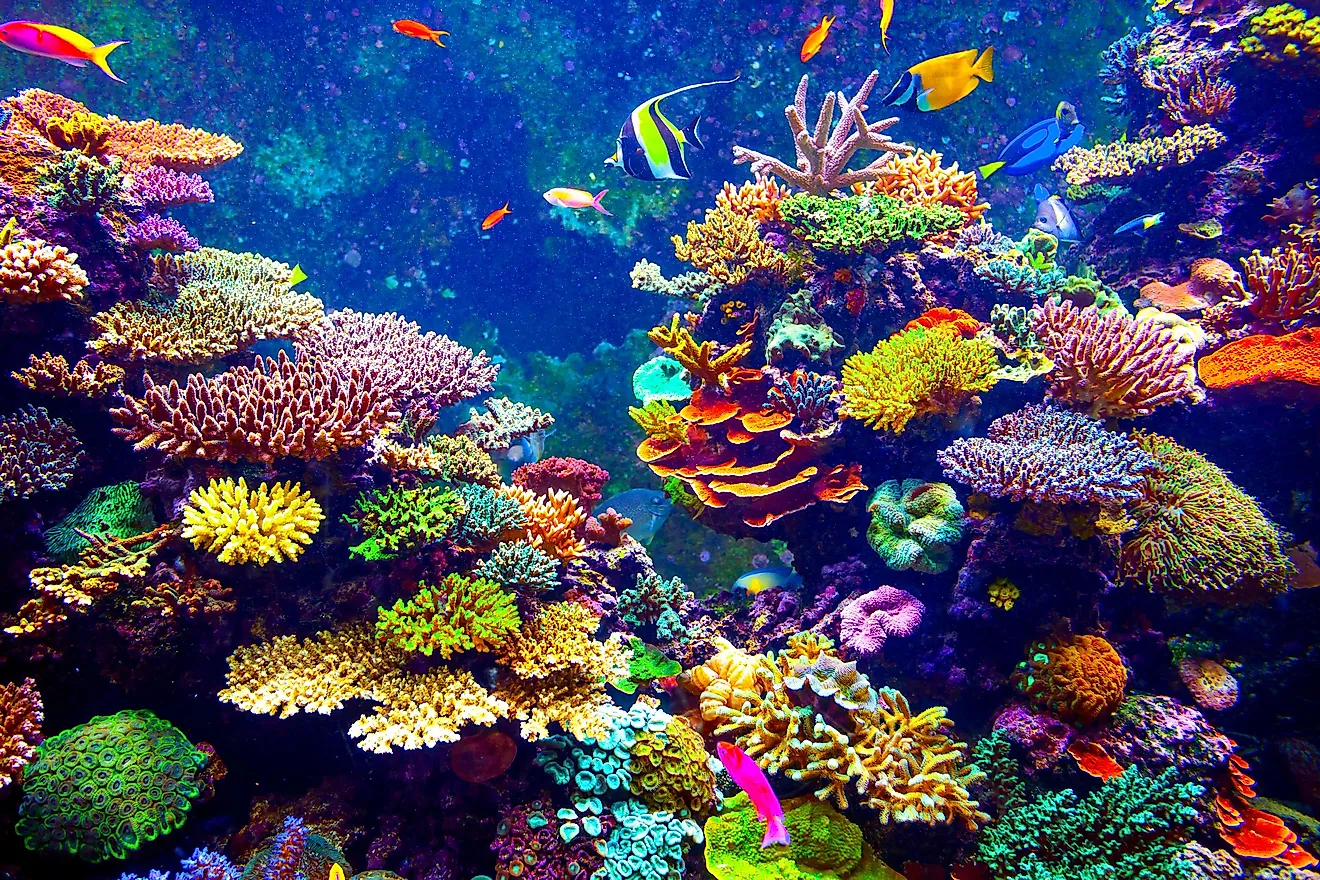
- The colorful coral reefs of the world are renowned for their high biological diversity and are also extremely beneficial to humans.
- Coral reefs are some of the world’s most fragile ecosystems and the condition of corals is a major indicator of the heath of the global ecosystem.
- Despite their significance, coral reefs are under extreme threat due to increased greenhouse gas emissions, ocean warming and acidification, pollution, and other human-caused issues.
Sometimes referred to as the rainforests of the sea, the colorful coral reef ecosystems of the world are widely known for high biological diversity and their ability to provide a safe habitat, spawning, and nursery grounds for an incredible variety of marine species. Occupying less than 1% of the world’s ocean area, coral reefs are also extremely beneficial to humans in terms of the varied ecosystem goods and services they provide. Coral reefs are one of the world’s most fragile ecosystems and the condition of corals is a major indicator of the heath of the global ecosystem.
However, despite their significance to humans and other life forms, coral reefs are under extreme threat due to increased greenhouse gas emissions, ocean warming and acidification, pollution, and other human-made environmental threats. Scientists and researchers from the World Resources Institute have estimated that two-thirds of the world's coral reefs are facing serious threats. The following article discusses the different threats to the coral reefs.
Content:
- Climate Change
- Ocean Acidification
- Pollution
- Algae And Bacteria
- Increased Sedimentation
- Toxic Chemicals
- Marine Debris
- Destructive Fishing Practices
- Irresponsible Tourism
- Coral Mining
Threats To Coral Reefs
The major global threats to the coral reefs are as follows:
Climate Change
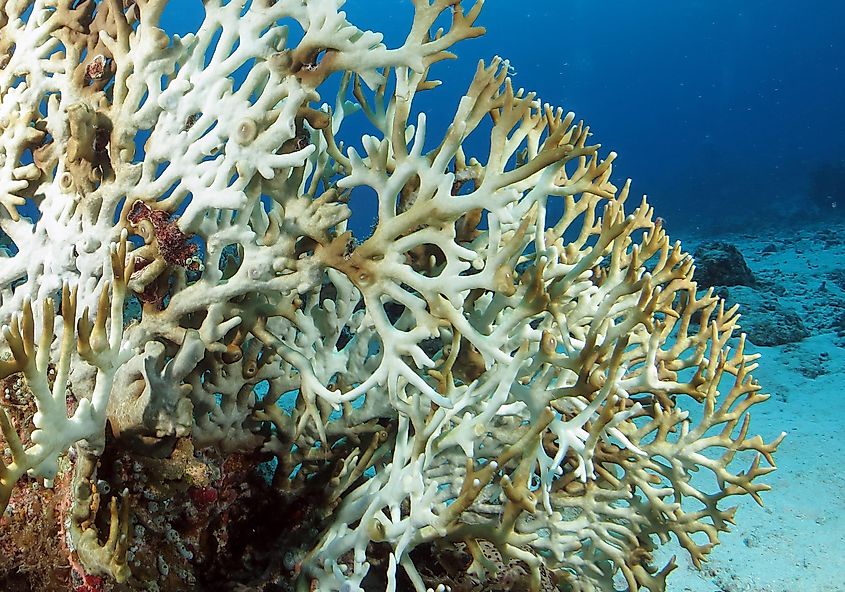
Coral reefs worldwide face the impacts of climate change since human-caused global warming has led to the heating of the earth’s atmosphere and the elevated surface temperature of ocean waters. The microscopic algae living in coral polyps and contributing to the health of coral, called zooxanthellae, are sensitive to higher temperatures. Therefore, a slight increase in the ocean temperature results in the expulsion of the zooxanthellae by the corals, exposing their limestone skeleton and leading to the whitening or bleaching of the coral tissues. When these bleached corals are exposed to warmer ocean waters for several days at a stretch, the corals will eventually die and the reef will turn into a barren habitat. It has been estimated that the optimal water temperature facilitating coral growth is around 20-28°C. However, if the water temperature becomes lower than 18°C or increases above 30°C, most of the corals will be bleached. With global warming continuing to heat the planet unabatedly, coral bleaching is expected to become more severe.
Ocean Acidification
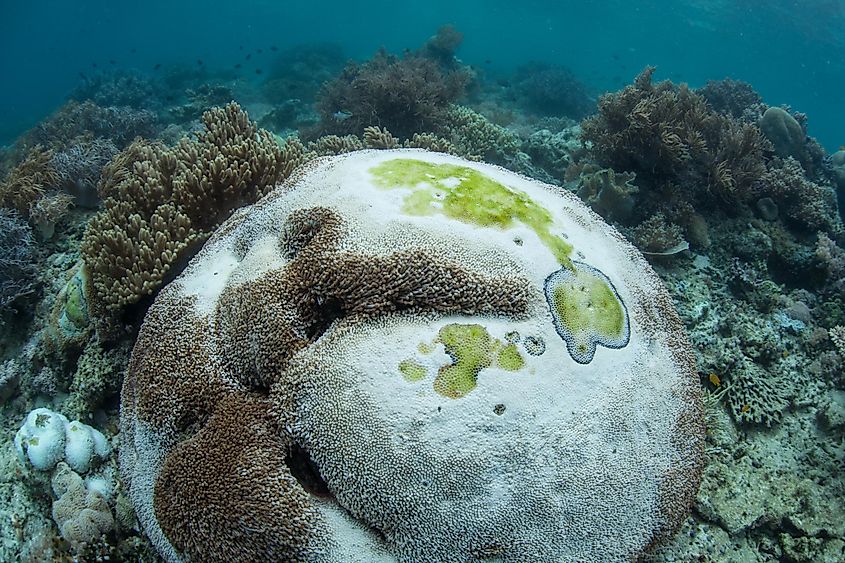
An increase in the carbon dioxide levels due to the excessive burning of fossil fuels has led to ocean waters becoming increasingly acidic, a process referred to as ocean acidification. This in turn lowers the pH of ocean water, subsequently affecting the coral reefs around the world. The carbonic acid formed as a result of this acidification process inhibits the ability of the corals to build their calcium carbonate exoskeletons. The weaker skeleton makes coral reefs more vulnerable to diseases and subsequent destruction of the reef framework. Studies have also revealed that an increase in acidification leads to a decline in the biodiversity of coral reefs, resulting in the removal of important species that are required for the formation of healthy reefs.
Other climate change impacts like rising sea levels, stronger and more frequent tropical storms, and altered ocean circulation patterns (El Nino) also severely affect the coral reefs. Due to the rise in sea levels, the coral reefs are predicted to end up much deeper underwater thereby receiving much less sunlight and growing more slowly. The stronger tropical storms cause much larger and more powerful waves which can break the coral branches, overturn the coral colonies and destroy the reef structure.
Coral reefs also face major threats from many local sources, which are as follows:
Pollution
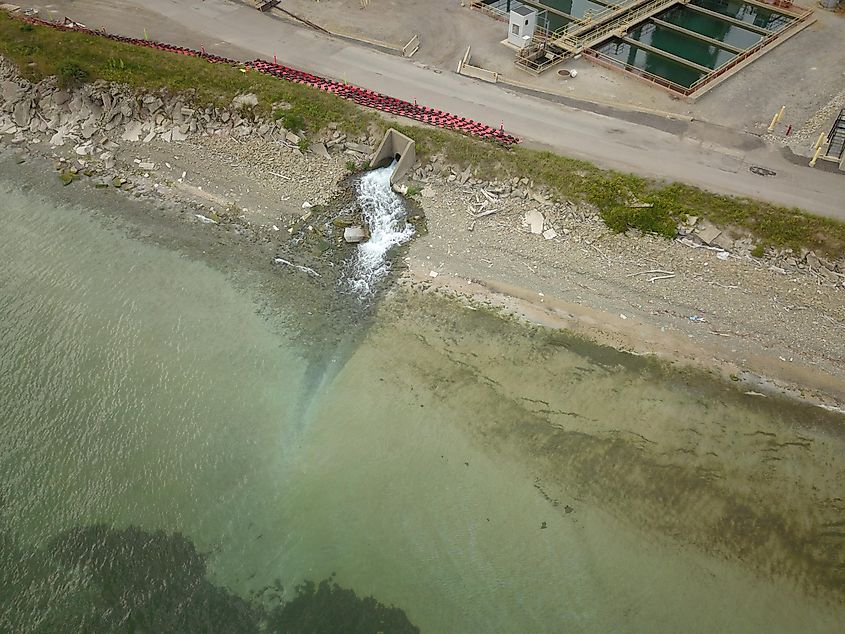
Major pollutants that are released from various sources, mainly due to careless human activities, pose a serious threat to coral reefs and the wide array of marine floral and faunal species that are solely dependent on them. These pollutants are either directly dumped into the oceans or by runoff that flows from the land into the ocean via rivers and streams. A rise in the human population results in more development of coastal areas. This leads to the alteration of the landscape and an increase in land-based pollution sources threatening the health of coral reefs.
Algae And Bacteria
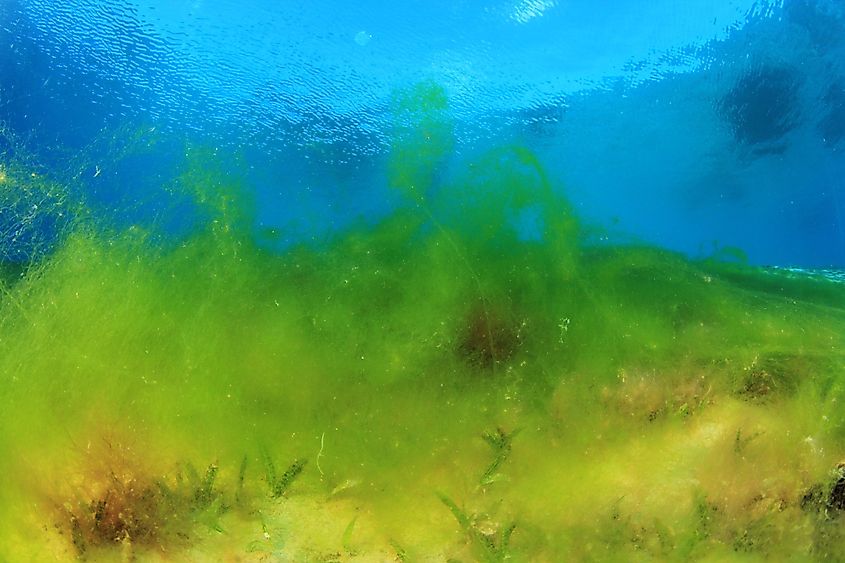
Nitrogen-rich fertilizers, animal wastes, human sewage, and untreated industrial effluents trigger the explosive growth of harmful marine algae that blocks the sunlight and starves the water of oxygen, resulting in an imbalance in the marine ecosystem. The excess nutrients also support the growth of life-threatening microorganisms like bacteria or fungi, that can be pathogenic to the corals and make them more susceptible to diseases. Similarly, hot water released from thermal plants and oil spills can also be highly detrimental to the health of the coral reefs.
Increased Sedimentation
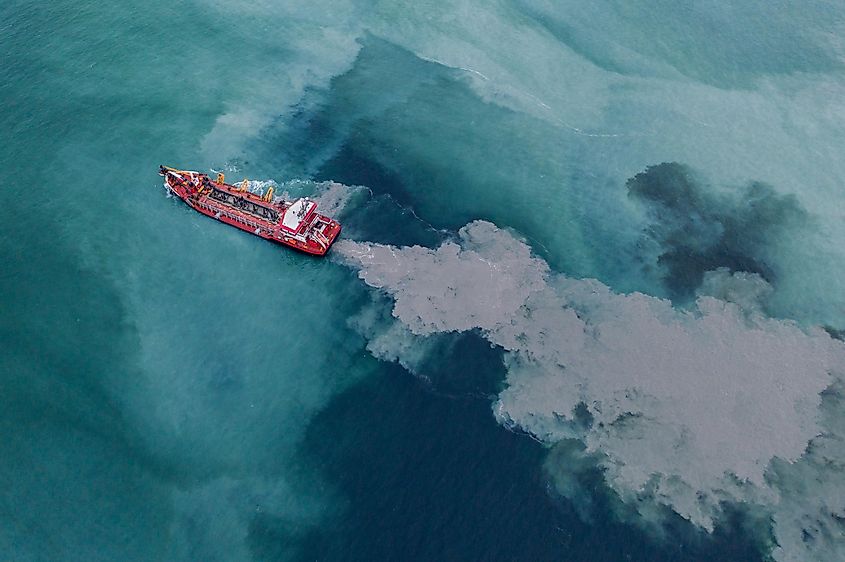
Sediments can enter water bodies through various coastal development activities like mining, farming, logging, and building projects, and urban stormwater runoff. Sediments that are deposited on coral reefs can smother corals, thereby impeding coral growth and reproduction, posing a severe threat to the health of the coral reefs. An increased volume of suspended sediments lowers the water quality and the opaque waters in turn drastically reduce the amount of sunlight reaching the coral reefs and the lower benthic ecosystems.
Toxic Chemicals

Untreated effluents containing harmful chemicals that are released into the water bodies from several industries pose a serious threat to coral reefs. Chemicals like methylparaben and oxybenzone that are used in most sunscreens and heavy metals like lead, copper, and mercury disrupt the coral’s reproduction and growth cycles, eventually leading to the bleaching of the corals.
Marine Debris
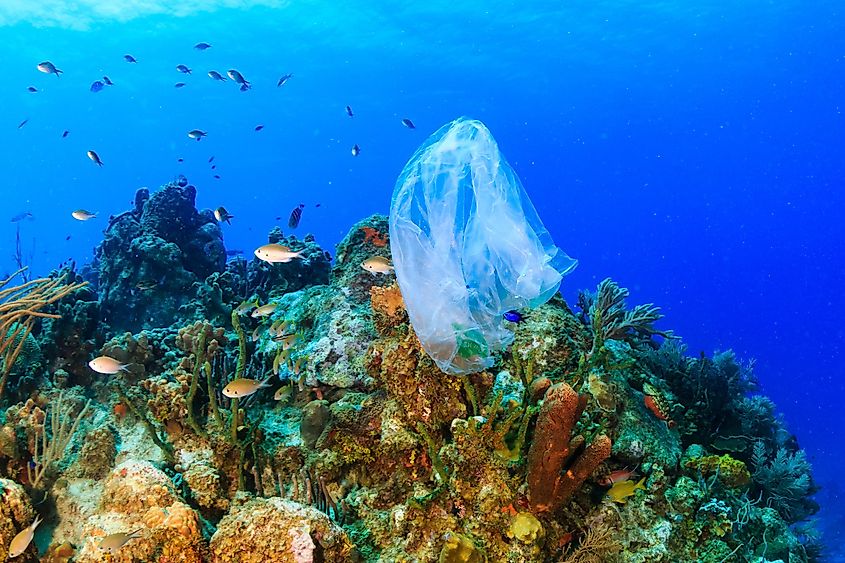
Abandoned fishing nets, discarded plastic bags, and fabrics also severely damage the coral reefs. It has been projected that by 2025, about 15.7 billion microplastics can come into contact with the coral reefs. Marine debris smothers the corals and prevents them from getting light and food.
Destructive Fishing Practices
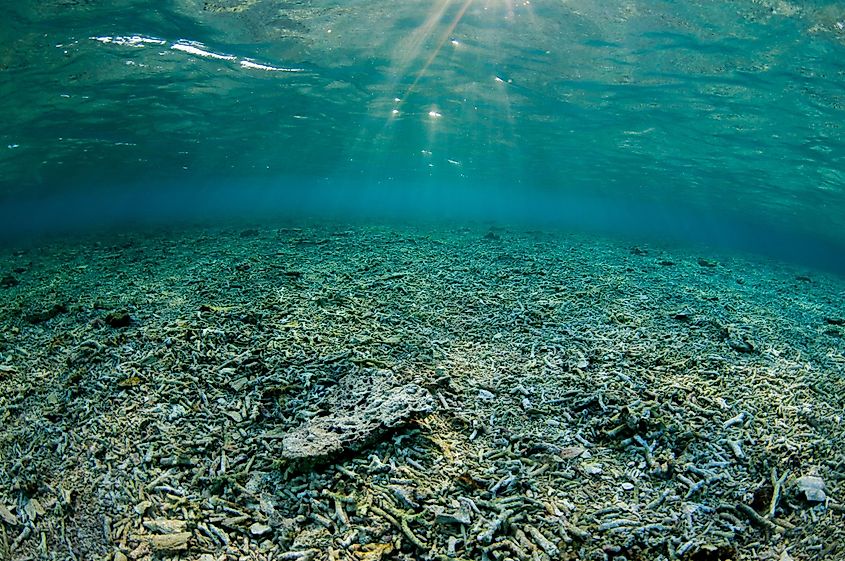
Unregulated and unsustainable fishing practices like blast fishing, cyanide fishing, deep water trawling, etc., can physically damage coral reefs and eliminate the species inhabiting such reefs. Muro-ami, which involves banging on the reef with sticks to catch fish, is also another highly destructive fishing practice. Boat anchors and ship groundings crush some sections of the reef, ruining the reef habitat for other organisms.
Overfishing causes disturbances in the food chain which affects the overall ecological balance of the coral reef and leads to the instability of the entire ecosystem. When the herbivorous parrotfish that graze on the seaweeds are overfished, the uncontrolled growth of this coral-damaging seaweed can smother the corals. Several corals and tropical fish are also harvested for the aquarium market.
Irresponsible Tourism
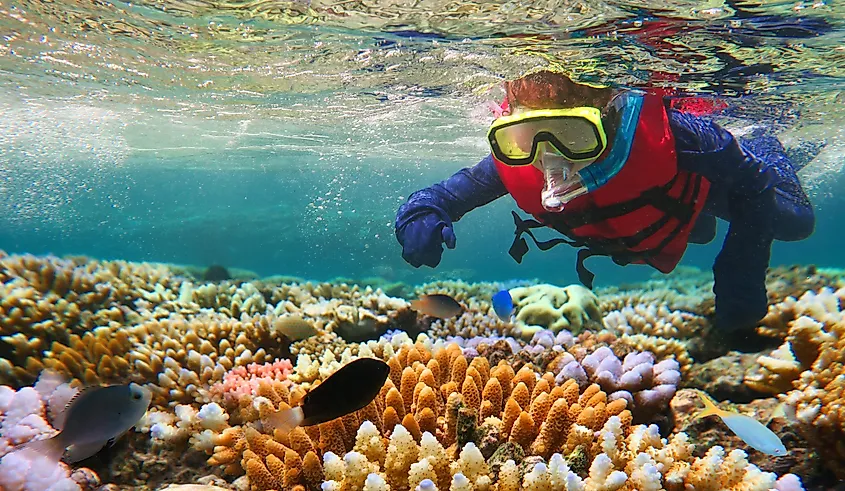
The brilliant and vibrant hues of coral reef ecosystems attract tourists in great numbers. Fishing, diving, snorkeling, and boating are some popular recreational activities that tourists enjoy near the coral reefs. Touching the reefs, stirring up the sand and sediments in the seabed, and collecting corals are some of the activities that damage the reefs and disturb the species that inhabit such reefs.
Coral Mining
Corals are often harvested from reefs and are used for several purposes. Corals are used to make bricks, fill roads, or manufacture cement. They are also sold as souvenirs to tourists. These activities deplete the coral reefs of their main building blocks and lead to the degradation of the coral reef.











